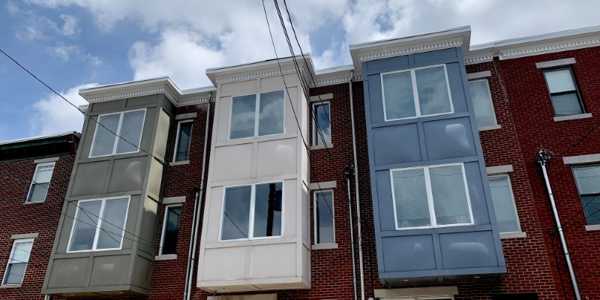Maximizing Your Profit In Real Estate Flipping
Author: Tooba
House flipping has become an attractive avenue for investors seeking to generate high returns quickly. However, achieving consistent profitability requires meticulous planning and precise execution. The real estate market 2024 presents unique challenges, including inflation, rising material costs, and increased competition from institutional buyers. This article delves into the core strategies and considerations for maximizing profit in real estate flipping amidst these conditions.
Strategic Property Selection: Location Is Key
The foundation of a profitable flip lies in choosing the right property, beginning with market research. Not all properties provide equal value—location and market conditions dictate the profit potential. Focus on neighborhoods experiencing economic growth, low crime, and excellent school districts, as these factors attract buyers.
In 2024, housing markets with tight inventories and rising prices are still prevalent. This creates both an opportunity and a challenge: while higher prices increase profit potential, finding affordable properties for flipping can be difficult. Identifying emerging areas where property values are likely to rise provides an edge, particularly in revitalizing markets.
Before finalizing a property purchase, it's essential to perform a thorough inspection to understand the scope of renovations required. Structural issues like foundation problems often entail extensive costs and eroding profit margins. On the other hand, homes needing only cosmetic repairs offer better opportunities for quick and cost-efficient upgrades, helping maximize returns.

Renovation Strategy: Focus On High-ROI Upgrades
Executing the right renovation strategy is crucial for enhancing the resale value of a flipped property. To maximize profitability, investors must prioritize upgrades that offer the best return on investment (ROI).
Prioritize Kitchens And Bathrooms For Maximum ROI
Kitchen and bathroom renovations are often cited as the most impactful investment in flipping. Buyers prioritize these spaces when evaluating a property, and modernizing them can significantly enhance the property's appeal. Incorporating popular trends, such as open-concept kitchens or energy-efficient appliances, can further boost the home's attractiveness. Even minor upgrades like new faucets or cabinet fixtures can create a polished look without breaking the budget.
Boost Curb Appeal With Simple Enhancements
First impressions are vital in real estate sales. Improving a property’s curb appeal by painting the exterior, adding landscaping, or updating exterior lighting can attract more potential buyers. These relatively low-cost improvements make the property stand out in online listings and open houses, potentially leading to higher offers.

Smart Material Sourcing And Contractor Relationships
Establishing long-term relationships with contractors can help secure better rates and timely service. Similarly, buying materials in bulk or through wholesale suppliers reduces overall costs, providing room for more significant profit margins. Investors need to strike a balance between quality and cost-efficiency. Opting for durable yet affordable materials ensures both buyer satisfaction and profitability.
Balancing DIY And Professional Work
While doing some of the work yourself can save on labour costs, knowing when to hire professionals is essential. Complex projects, such as electrical work or plumbing, should be handled by experts to avoid safety risks and potential rework, which could delay the project and increase costs.

Practical Financial Management: Planning And Budgeting For Success
Sound financial management is at the heart of a successful house flip. Every decision, from acquisition to renovation and sale, must be backed by a solid budget and financial strategy.
Creating A Comprehensive Budget
Developing a detailed budget helps ensure that no expense is overlooked. This budget should include the property's purchase price, renovation costs, holding expenses (like property taxes and insurance), and selling costs (such as real estate agent commissions). Investors must also allocate a contingency fund, typically 10-20% of the overall budget, to cover unforeseen expenses during the renovation process.
Tracking Expenses And Staying Within Budget
It is critical to monitor expenses closely throughout the project. Regularly comparing actual expenditures to the budget helps detect overspending early, enabling timely corrective measures. In 2024, rising labour and material costs will make this step more critical than ever. Project management software or budgeting tools designed for real estate investors can streamline this process.
Exploring Financing Options For Better Cash Flow
With high interest rates and inflation, securing cost-effective financing becomes essential. Many investors turn to hard money loans for their speed and flexibility, though they have higher interest rates. Traditional mortgages or private lenders may offer better terms but take longer to process.
Experienced flippers often diversify their funding sources to reduce reliance on a single lender, thereby minimizing risk. Understanding the impact of financing on the project’s ROI is crucial—each loan's terms, including interest rates and fees, can significantly affect the bottom line.
Minimizing Holding Costs
Every day a property remains unsold, it incurs holding costs, including taxes, utilities, and loan repayments. Efficient project management ensures the renovation is completed on time, reducing the holding period and associated costs. Investors should also be prepared to adjust their marketing strategy quickly if the property does not sell as expected, ensuring a timely sale and reduced financial burden.

Marketing And Selling: Maximizing Sale Potential
Marketing plays a critical role in maximizing profit. A multifaceted strategy—combining online listings, social media promotion, and professional staging—ensures maximum visibility.
Leveraging Online Platforms And Social Media
Listing properties on platforms such as Zillow, Realtor.com, and local Multiple Listing Services (MLS) is essential for reaching a broad audience. High-quality photos, virtual tours, and detailed property descriptions capture the attention of potential buyers and encourage inquiries. Social media platforms like Facebook and Instagram can further amplify the property’s visibility by targeting specific buyer demographics.
Timing The Market For Optimal Results
Seasonality also impacts the success of a property sale. Spring and summer are traditionally the most active seasons for homebuyers, offering the best chance for a quick sale at favourable prices. Monitoring economic indicators, such as interest rate trends and local housing supply, can help determine the optimal time to list a property for sale.

Conclusion
Maximizing profits in real estate flipping requires more than just finding undervalued properties. Success hinges on strategic property selection, effective renovation planning, disciplined financial management, and intelligent marketing strategies. The challenges posed by rising costs and heightened competition in 2024 make it essential for investors to be thorough in planning and agile in their execution. Real estate flipping remains a viable path to significant profits, provided every decision is made precisely and backed by data. Flippers can continue to thrive in this evolving landscape with the right strategies.



